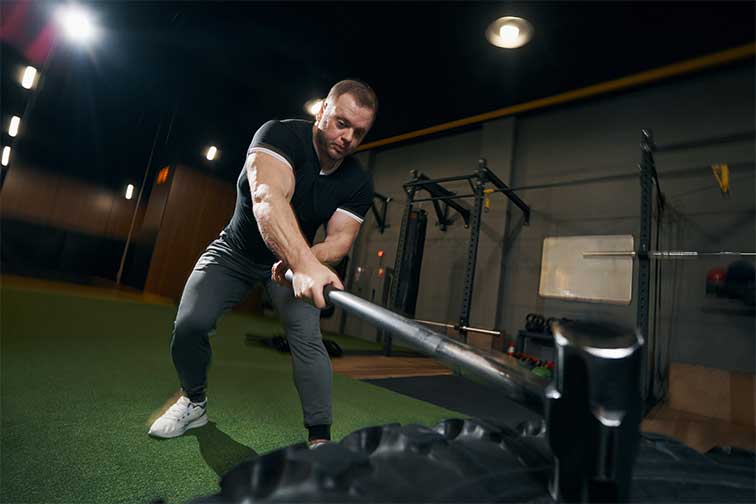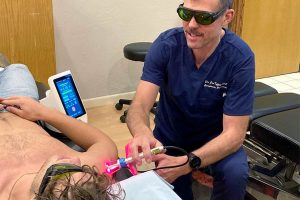Over the years I have had many people tell me what they think is wrong with their joints:
“I’m out of alignment!”
“It popped out of place!”
“It just needs to be cracked!”
“It’s locked up!”
These statements and many others allude to the fact that they think their spine or other joints of the body are out of alignment. However, I don’t think I have had anyone come in and tell me that their joints feel too loose. The fact is, though, there are many people who indeed have very mobile joints and that is what causes their problems.
Your Joints Need to Be Stabilized
We have around 360 joints in our body. Each of those joints fits into different categories. We have hinge, ball and socket, pivot, suture, saddle, plane, and condyloid joints. Each joint needs to be stabilized while it goes through its range of motion. Your elbow is an example of a hinge joint. The joint itself is deep; therefore, it is stabilized mostly from the joint itself. Due to it being very stable, it is not very mobile. It has a range of motion of about 75 – 120 degrees. The shoulder, on the other hand, is a ball and socket joint — a pretty shallow ball and socket at that. This allows for a large range of motion (180 degrees) in many different directions. Just the opposite of the elbow then, the shoulder is unstable and needs to get its stability from the muscles around it. Most of us have heard of the rotator cuff of the shoulder. These muscles help to keep the shoulder stable.
People will also say that they are double jointed, but there really is no such thing. In reality, the person has very shallow joints and the ligaments around the joint are either lax or have a lot of elastin in them, which makes them very mobile. The problem is that people with joints like these are more likely to have joint problems, such as dislocation of the joint.
It’s Out of the Socket!
This past weekend, I was at a soccer game (Match? Who knows?). The play was going on when the referee blew his whistle for what seemed like no reason; then, we heard someone say, “It’s out of the socket!” One of the players was running around in a lot of pain, and you could see that his right shoulder looked much different than his left — his right shoulder had popped out of the socket. Unfortunately, this is not a rare occurrence. You won’t see it too often though when an elbow pops out of the socket because of the difference in stability.
You Have to Work Your Core
More than likely, you have heard people state that in order to have a strong back, you need to work on your core. I think most people think that it means you need to do sit-ups. That isn’t exactly correct. In the body, there are muscles that move your joints. Some people call them global muscles while others call them mobilizers. There are also muscles that are strictly there to stabilize your joints. These may be called core muscles or simply stabilizers. Finally, there are muscles that work to do both. It is very important that we work to strengthen all these muscles in order to have strength but also stability when doing an activity.
Understanding which muscles you are strengthening when working out is very important. Sit-ups, for example, move your spine into flexion; therefore, sit-ups strengthen your global muscles and not really your core. There is a muscle in the abdomen that acts like a belt. It wraps around from the front of your body and attaches to the back, sort of like God gave you an inborn workout belt. This muscle is called the transverse abdominis and is worked out a bit in a sit-up but much more in a plank. There are also tiny muscles called the multifidi that attach to your vertebrae that act like little guy wires to stabilize the spine.
A person can have very strong global muscles but weak stabilizing muscles. This can set you up for injury, especially if you are way out of balance and you can lift a lot of weight but don’t have the stability. This is why we have all heard of the giant bodybuilder injuring their back when bending down to pick up a pencil off the floor. The load wasn’t the problem, it was the instability with such strong global muscles.
If My Joints Aren’t Locked Up, Then Why Do I Have the Pain?
Pain is one of the most common reasons someone will show up in our office. When we first see someone, we do a very thorough exam to determine where the pain is coming from and why the person developed it. One problem that I see consistently is people coming in with pain in the neck/shoulder area. They show me the classic “reaching over with their left hand and grabbing the right trap area and along the shoulder blade” move. They tell me that it constantly burns, that they rub it, heat it, have their loved ones massage it, etc. They do everything to get it to go away, but every solution seems to be temporary. For many, the problem they have is a weak rotator cuff or out-of-balance rotator cuff, with the source of the problem actually in the front of the body.
Here’s why: muscles in the armpits and the pec muscles are way stronger than the muscle in the back called the rhomboid. The rhomboid is trying to pull the shoulder blade back but it can’t, because that muscle is not designed to stabilize the shoulder and it develops tons of trigger points. Until the muscles in front are worked on and the rotator cuff is strengthened, that person will continue to have the problem.

I Crack My Back All the Time — Why Does It Still Hurt?
Another complaint we often hear is the person who tells me they need to crack their back all the time. When I take them through the part of the exam where we look at their mobility, the person has no problem touching their toes, bending way back, and twisting almost like an owl — and yet, their back is “tight.” It is not tight — it’s just not stable. The vertebral joints of the back are just two flat surfaces on top of each other which allows for a wide range of motion. They need lots of stability. When asked to do a plank or a bridge, the person starts shaking in seconds, their hamstrings cramp up on them, and they collapse. This is a core issue. The person is using their global muscles like their psoas, quadratus lumborum, erector muscles, and hamstrings to stabilize their low back.
The same is true for the neck. The neck has its own “core”, but most people never think to strengthen it. In fact, most people develop some serious muscle imbalance in the neck because they are looking at screens all day, looking down at their phone, using their mouse way too far from the body, and working on a laptop way too long. They have some seriously shortened muscles in the front of their neck, causing forward head posture. They then wonder why their neck hurts. They think going in and getting their neck “popped” is the solution, and then wonder why the relief from the adjustment is short-lived.

Okay, I Get it, I Need to Strengthen My Core — But How?
I won’t go into details on how to strengthen the stabilizing muscles of each joint as that would get lengthy. If you go on YouTube, you will find thousands of videos that show you how to strengthen the muscles around each of your joints. I will say that the approach I take is to do functional movement training that strengthens those muscles while at the same time getting in a hard yet fun workout.
When I was younger, the mantra for working out was to never squat too low and to never lift and twist, which made no sense to me, because in real life, you do those moves all the time. The difference is that the functional movement has you squat deep, twist your body while you are lifting, etc., but you do it in a controlled way so that when you get into the real world, your body is ready for whatever you throw at it. The other approach I take is to limit how much time you put your body in positions that aren’t good for it. For example, I limit my sitting, standing in one spot, and poor sleep positions such as stomach sleeping.
So Are You Saying I Don’t Need The Chiropractor?
In my opinion, one of the best practitioners to have on your wellness team is a chiropractor, as they can identify things before they become a problem if you go and see them regularly. If you do the right things for your body though, you will need to see the chiropractor less often and will be a lot less likely to develop problems. If you do develop a problem, you’ll know where to go to get help. Seeing your chiropractor will not only help you figure out what is causing the problem, but also help you figure out why you developed the problem in the first place.




